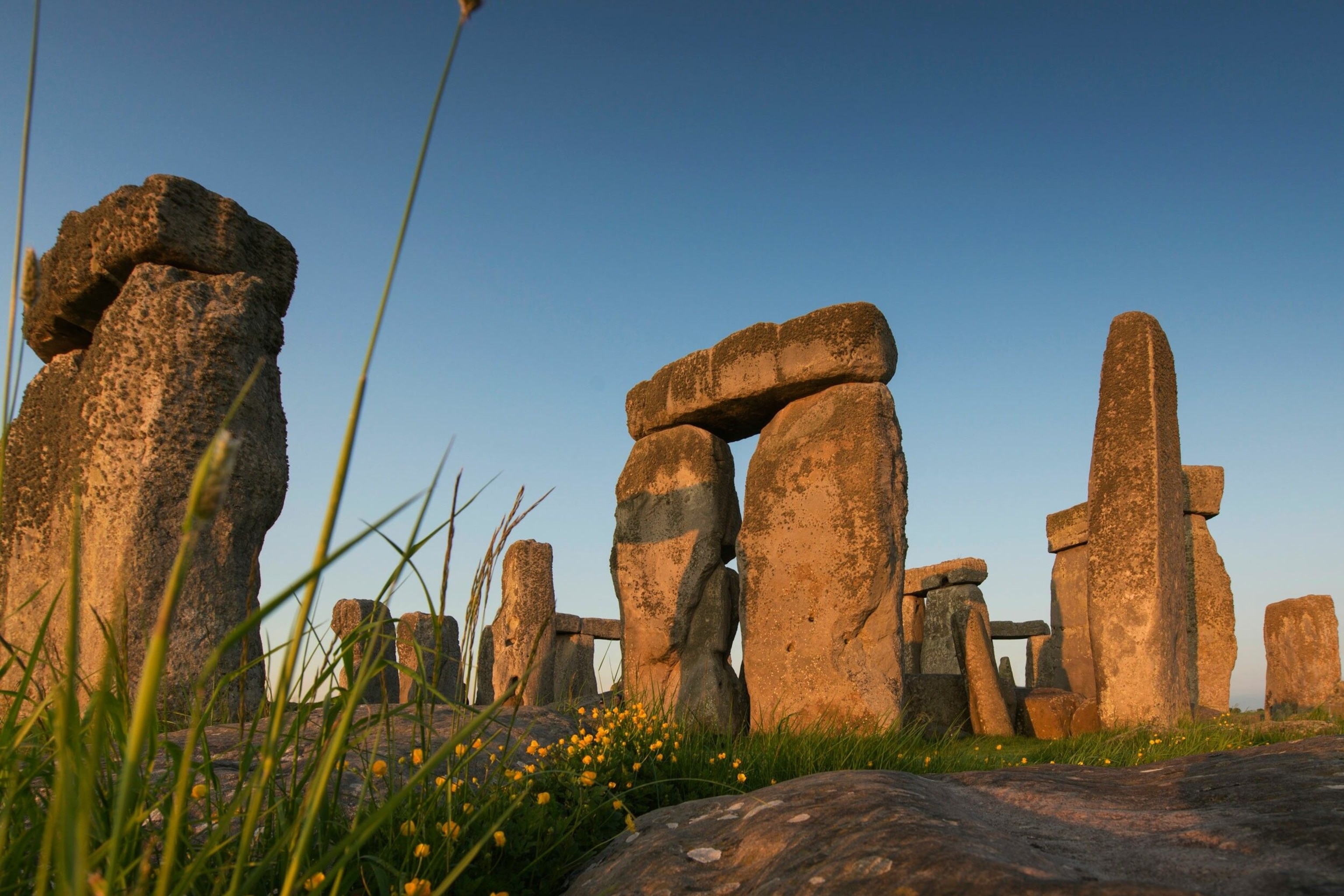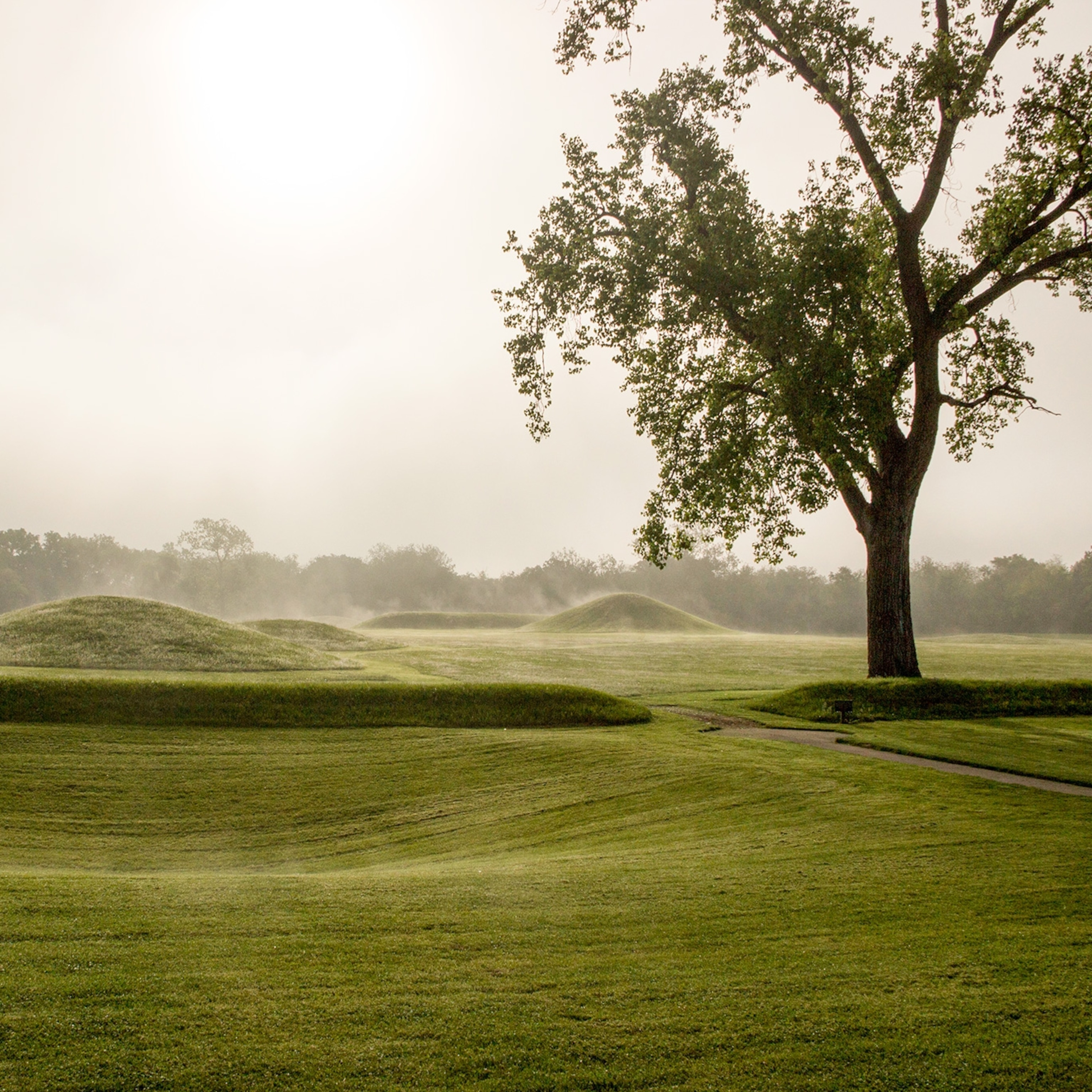
Seven of the best archaeological sites in the UK
New discoveries surrounding the origins of Stonehenge have piqued the nation’s interest in all things archaeological. Here are seven hands-on destinations to visit to dig a little deeper into the UK’s ancient history.
With the latest discovery about the origins of Stonehenge’s mysterious bluestones, major Roman finds in Oxford, and Netflix’s The Dig bringing cinematic attention to the incredible story of Anglo-Saxon site Sutton Hoo, there’s a buzz around the archaeological treasures buried across the UK. We dig into the nation’s top spots to explore our ancient past, where newly revamped museums, interactive exhibits and hands-on excavation experiences bring our early history vividly to life.

1. Sutton Hoo, Suffolk
First unearthed in 1939, with the shadow of the Second World War looming, Sutton Hoo is an early medieval royal burial site that’s famously home to the ship burial of seventh-century Anglo-Saxon King Rædwald.
Long-neglected, Sutton Hoo reopened in summer 2019 after a year-long refurbishment, which included transforming Tranmer House, home of Edith Pretty who commissioned the original archaeological excavation (the events of which are dramatised in the film The Dig, released earlier this year). Now open to the public for the first time, the 1930s house has in-depth displays detailing the development of the dig and the ongoing research at Sutton Hoo.
The refurb has also seen the creation of a new walking route out to the burial mounds, where you can follow in the footsteps of the Anglo-Saxons, who hauled the monumental timber ship to the top of a hill to bury their king, replete with gold and other treasures, including the iconic Sutton Hoo helmet.
Nearby, at Woodbridge, pay a visit to The Longshed, where the Sutton Hoo Ship’s Company (a team of professionals, volunteers and enthusiasts) is currently constructing a replica of the ship.
2. Isle of Wight
A new species of dinosaur, related to the mighty Tyrannosaurus rex, was recently discovered on the Isle of Wight. One of Europe’s richest palaeontology hubs, among the island’s haul are around 20 species of dinosaur from the early Cretaceous Period (dating back 110 million years).
Palaeontologists at the University of Southampton believe the latest big find — four bones unearthed at Shanklin — belong to a new species of theropod dinosaur that lived in the Cretaceous period, 115 million years ago. Named Vectaerovenator inopinatus, it’s estimated to have been up to 13ft long, and is thought to be related to T-rex and modern-day birds.
These fascinating fossils are now on display at Dinosaur Isle, the UK’s first purpose-built dinosaur museum. Step over the sea wall at Sandown to explore its recreated prehistoric landscape, populated by life-sized models of the Isle of Wight's biggest dinosaur discoveries; see skeletons as they’re found by fossil hunters; and watch volunteers preparing the latest finds.

3. Stonehenge, Wiltshire
There’s always something big being unearthed in Stonehenge country. The latest discovery reveals that the origins of its mysterious bluestones lay in a quarry deep in the Welsh Preseli Hills, and that they first stood in a stone circle that predates Stonehenge, before likely being carried overland to the then developing site on Salisbury Plains.
Try your arm at dragging a massive stone monolith at the site’s smartly curated visitor centre. Or book in advance for a dawn tour of the stone circle itself, before the site opens to the public; led by an expert guide, the tour will get you within look-but-don’t-touch proximity.
Stonehenge country has numerous options for further exploration, including the many archaeological treasures on show at Salisbury Cathedral Museum. And within sight of the stones is the UK’s biggest prehistoric monument, which is around 4,500 years old. Uncovered in 2020, the Neolithic find includes 20 vast holes that suggest the boundaries of an earlier enclosure circle. The site is so large that is contains Durrington Walls, the UK’s largest henge, and Woodhenge too.

4. Wittenham Clumps, Oxford
Occupied for more than 3,000 years, archaeologists were expecting to find some worthy prizes beneath the ground of this ancient Oxfordshire landmark. What they weren’t prepared for was a double-whammy discovery that spanned two rich seams of history: an extended Iron Age settlement with more than a dozen roundhouses dating from 400BC to 100BC as well as a vast Roman villa dating back to the late third century.
Wittenham Clumps is managed by Dig Ventures who offer various Archaeology In Your Hands experiences, which they describe as ‘exciting crowdfunded and crowdsourced archaeology projects you can be part of’. These can range from guided excavations at live digs to ‘Finds Room’ experiences, expert talks to online courses endorsed by the Chartered Institute for Archaeologists. It can be as in-depth or accessible as you desire; DigCamp, for example, are day experiences for families to get hands-on at a real, live, in-progress dig, dirt and all.
5. Orkney Islands, Scotland
At the heart of Neolithic Orkney’s rich pickings, four UNESCO World Heritage Sites are widely regarded as the finest in Western Europe.
Skara Brae is older than both the Egyptian pyramids and Stonehenge and has been dubbed the Scottish Pompeii for its pristine state. Dating back some 5,000 years, this Neolithic settlement was discovered in 1850 by the Laird of Skaill, thanks to a landscape-stripping storm that raised grass from a mound under which the ruins had been concealed for millennia.
With the white-sand beach of the Skaill as a fittingly dramatic backdrop, Skara Brae is a stone-built prehistoric settlement that reveals the finer points of day-to-day Neolithic life. See ancient homes complete with stone bed enclosures, dressers and seats. Replica constructions complete the interior interpretation, which can be further explored in touch-screen clarity at the on-site visitor centre museum.

6. Hadrian’s Wall Country
Discoveries still abound at Hadrian’s Wall, where there are plenty of places to step back into the past. Try historical re-enactments around the ruins, archaeological talks, guided walks or wall-spanning history-focused hikes and bike routes that take you between the North and Irish Seas. Plus, there are lots of hands-on dig opportunities for all ages.
The wall itself, a near 80-mile stretch of fortifications marking the northern frontier of Hadrian’s Roman Empire, isn’t the only attraction here: there’s so much more to see in the surrounding country.
A mile south of the wall, Vindolanda is regarded as one of Europe’s most exciting Roman digs: nine forts built on top of each other that garrisoned soldiers from across the Roman Empire. It includes a bathhouse, tavern and shops, all dating back to the third century. And if this isn’t compelling enough, a 2017 discovery revealed an entire Roman cavalry barracks underneath the site, complete with thousands of extraordinary military and personal possessions dating back almost 2,000 years. It was a haul significant for its size and pristine state, but also for its evidence of the long military build-up that led to the wall’s construction in AD 122.
Excavations at Vindolanda take place annually, attracting hundreds of volunteers from all over the world, so sign up early. Or visit the on-site museum, which has an extensive display of the mind-boggling number of objects found during the excavations.

7. Scilly Isles
The tiny Isles of Scilly are home to 239 hugely significant ancient monuments and archaeological landmarks: the UK’s greatest density of historic sites.
Maritime shipwrecks, Bronze Age burial chambers dating back 3,000 years, deserted Christian chapels on uninhabited islands, fortified castles and English Civil War headlands, all contribute to these wild islands’ natural landscapes. St Mary’s, the largest island, is home to large stone earth mounds that form distinctive Bronze Age burial chambers known as entrance graves — often described as Scillonian tombs, thanks to their local concentration.
Strikingly preserved Innisidgen has sweeping views across to neighbouring St Martin’s. And the cemetery of Porth Hellick Down, in St Mary’s, to the south east, has six grave mounds, including the impressive 12-metre-wide Porth Hellick Down Burial Chamber: just two of a string of ceremonial monuments lining the Scilly Isles’ coastal hilltops.
They’re stellar spots for eternal rest, or a panoramic place to camp for a few nights if you manage to bag a booking at any of the islands’ four campsites.
Follow us on social media
Twitter | Facebook | Instagram
You May Also Like
Go Further
Animals
- This ‘saber-toothed’ salmon wasn’t quite what we thoughtThis ‘saber-toothed’ salmon wasn’t quite what we thought
- Why this rhino-zebra friendship makes perfect senseWhy this rhino-zebra friendship makes perfect sense
- When did bioluminescence evolve? It’s older than we thought.When did bioluminescence evolve? It’s older than we thought.
- Soy, skim … spider. Are any of these technically milk?Soy, skim … spider. Are any of these technically milk?
- This pristine piece of the Amazon shows nature’s resilienceThis pristine piece of the Amazon shows nature’s resilience
Environment
- This pristine piece of the Amazon shows nature’s resilienceThis pristine piece of the Amazon shows nature’s resilience
- Listen to 30 years of climate change transformed into haunting musicListen to 30 years of climate change transformed into haunting music
- This ancient society tried to stop El Niño—with child sacrificeThis ancient society tried to stop El Niño—with child sacrifice
- U.S. plans to clean its drinking water. What does that mean?U.S. plans to clean its drinking water. What does that mean?
History & Culture
- Meet the original members of the tortured poets departmentMeet the original members of the tortured poets department
- Séances at the White House? Why these first ladies turned to the occultSéances at the White House? Why these first ladies turned to the occult
- Gambling is everywhere now. When is that a problem?Gambling is everywhere now. When is that a problem?
- Beauty is pain—at least it was in 17th-century SpainBeauty is pain—at least it was in 17th-century Spain
- The real spies who inspired ‘The Ministry of Ungentlemanly Warfare’The real spies who inspired ‘The Ministry of Ungentlemanly Warfare’
Science
- Here's how astronomers found one of the rarest phenomenons in spaceHere's how astronomers found one of the rarest phenomenons in space
- Not an extrovert or introvert? There’s a word for that.Not an extrovert or introvert? There’s a word for that.
- NASA has a plan to clean up space junk—but is going green enough?NASA has a plan to clean up space junk—but is going green enough?
- Soy, skim … spider. Are any of these technically milk?Soy, skim … spider. Are any of these technically milk?
- Can aspirin help protect against colorectal cancers?Can aspirin help protect against colorectal cancers?
Travel
- What it's like to hike the Camino del Mayab in MexicoWhat it's like to hike the Camino del Mayab in Mexico
- Is this small English town Yorkshire's culinary capital?Is this small English town Yorkshire's culinary capital?
- This chef is taking Indian cuisine in a bold new directionThis chef is taking Indian cuisine in a bold new direction
- Follow in the footsteps of Robin Hood in Sherwood ForestFollow in the footsteps of Robin Hood in Sherwood Forest






